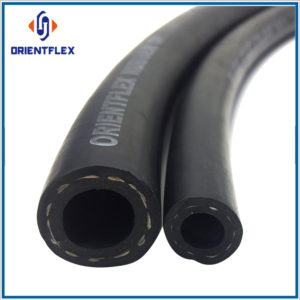The characteristics of rubber fuel hose are physiological inertia, UV resistance, ozone resistance, high and low temperature resistance (-80 to 300 degrees), high transparency, strong resilience, compression resistance, deformation resistance, oil resistance, stamping resistance, acid and alkali resistance, wear resistance, flammability, voltage resistance, electrical conductivity and other properties. If the rubber fuel hose is installed, do you know how to maintain it in the later stage? Let’s look at it together.
It is very important to determine the length of the rubber fuel hose you need, but also should check whether the use conditions of the rubber hose meet the requirements of the selected hose. Make sure that the rubber hose you will be using is appropriate. The values of working pressure and suction should be carefully determined. In particular, sudden pressure changes or pressure spikes that exceed allowable larger values will greatly shorten the life of the hose.

The ends of the fuel hose should not be continuously immersed in the material transported. If you install the rubber tubing so that its bending radius is less than the specified lower value, the service life of the rubber tubing will be greatly shortened. Therefore, before installation, it is recommended that you consult on the use of information, especially the bending radius of the rubber tubing. It is recommended that you empty the rubber hose after use. It should be cleaned if necessary.
The rubber fuel must be inspected after each use to ensure that there is no structural damage. Testing is recommended if the rubber fuel is subjected to severe pressure during use or if the outer layer of the hose will be in contact with the fluid for a long period of time.
